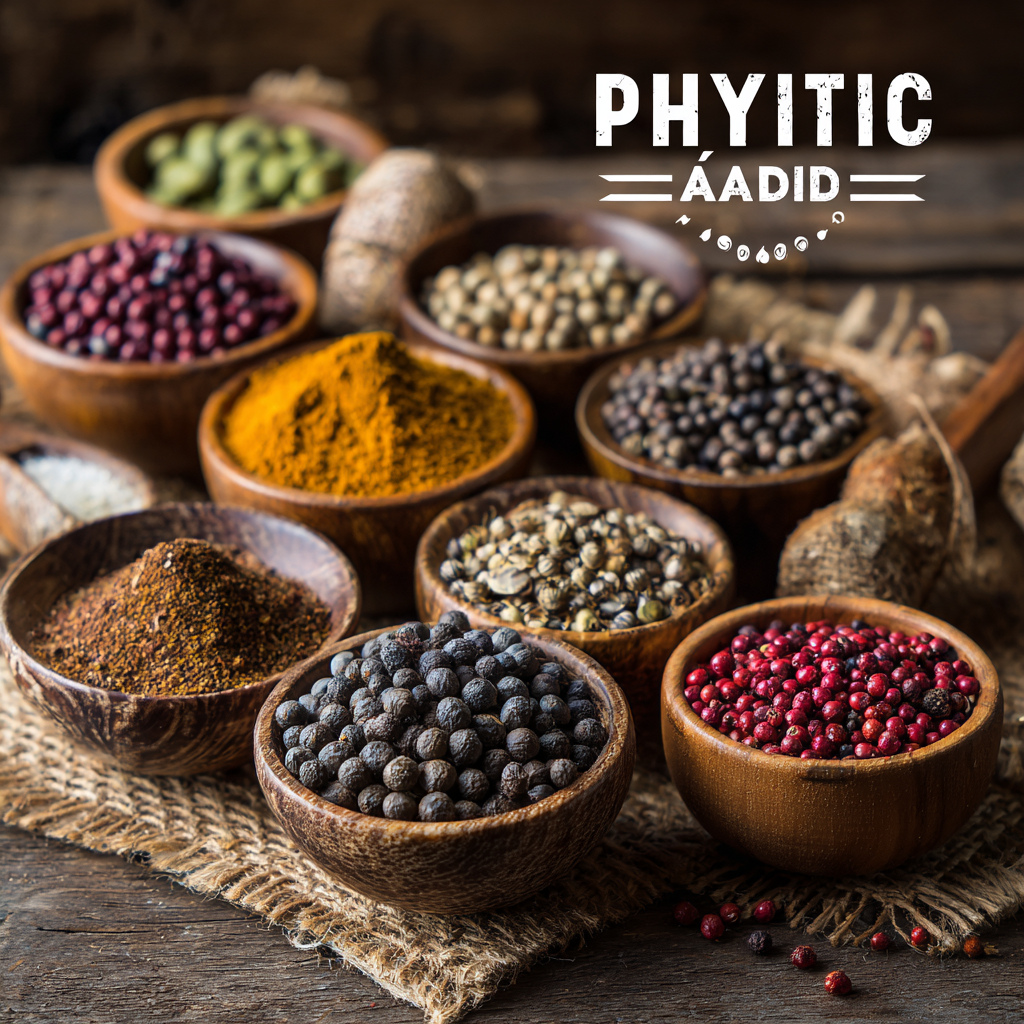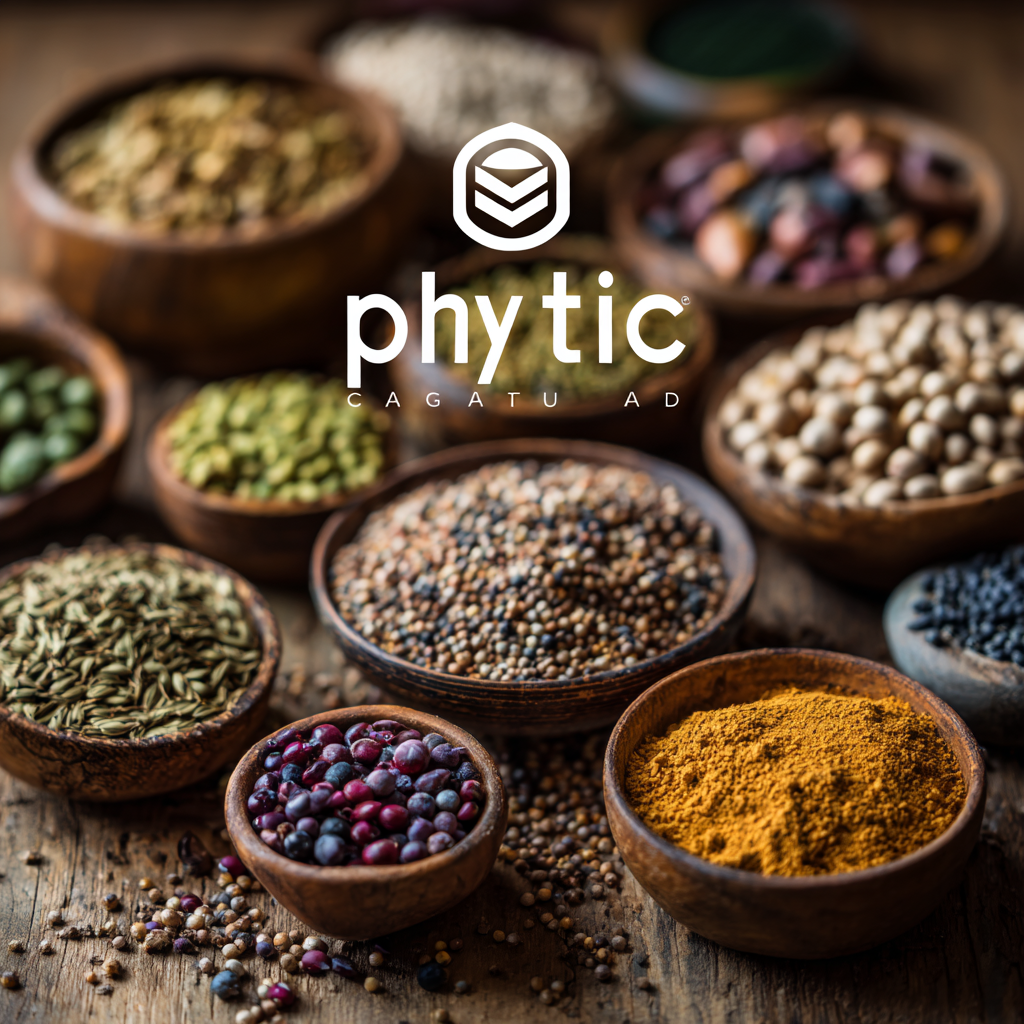
News
The Ultimate Guide to Sourcing the Best Phytic Acid: Trends, Benefits, and Market Insights for Global Buyers
In recent years, Phytic Acid has garnered significant attention within the global market, primarily due to its diverse applications and numerous benefits. Often referred to as an "anti-nutrient", Phytic Acid is naturally found in various plant seeds, nuts, and whole grains, playing a crucial role in mineral storage. However, the discussion surrounding Phytic Acid has evolved, highlighting not only its potential drawbacks but also its valuable contributions to nutrition and health. As buyers navigate the complexities of sourcing this compound, understanding current trends, benefits, and associated challenges is essential. This guide aims to provide comprehensive insights into the sourcing of Phytic Acid, equipping global buyers with the knowledge needed to make informed decisions while addressing prevalent issues in the market.

Understanding Phytic Acid: An Overview of Its Natural Sources and Properties
Phytic acid, often referred to as inositol hexakisphosphate, is a naturally occurring compound predominantly found in seeds, nuts, grains, and legumes. This plant-derived antioxidant plays a crucial role in phosphorus storage, providing essential nutrients to plants during germination. Rich sources of phytic acid include whole grains like brown rice and oats, seeds such as pumpkin and sunflower, as well as legumes like lentils and chickpeas. Understanding these natural sources is vital for buyers looking to incorporate phytic acid into health products, supplements, or food formulations.
In addition to its role in plant nutrition, phytic acid is renowned for its health benefits in human diets. It acts as a powerful antioxidant, potentially reducing the risk of developing certain chronic diseases, including cancer and cardiovascular issues. Furthermore, phytic acid has been shown to support mineral absorption by chelation of excess minerals in the digestive tract, thus playing a dual role in promoting health while also influencing nutrient bioavailability. For global buyers seeking high-quality phytic acid, recognizing its natural sources and inherent properties is essential for informed sourcing decisions.
Key Benefits of Phytic Acid: Nutritional and Health Impact on Consumers
Phytic acid, often referred to as an anti-nutrient, is gaining recognition for its potential health benefits rather than drawbacks. As a naturally occurring compound found in seeds, grains, and legumes, its role in enhancing consumer health is becoming increasingly significant.
One of the key benefits of phytic acid lies in its ability to act as a powerful antioxidant, helping protect the body from oxidative stress and reducing the risk of chronic diseases. Its chelating properties enable it to bind with minerals like iron and zinc, promoting their absorption and potentially enhancing overall nutritional status when consumed in moderation.
Moreover, recent studies have highlighted phytic acid's role in blood sugar regulation and cholesterol management. By aiding in the slow release of glucose into the bloodstream, it helps mitigate spikes in blood sugar levels, making it a beneficial addition to the diets of diabetics and those seeking weight management options.
Additionally, its impact on lowering bad cholesterol has attracted interest from health-conscious consumers looking to improve their heart health. As the market evolves, embracing the advantages of phytic acid could lead to innovative food products that cater to the growing demand for functional ingredients in the health-conscious demographic.
Current Trends in Phytic Acid Sourcing: Market Demand and Supply Dynamics
In recent years, the sourcing of phytic acid has seen significant shifts due to evolving market demands and greater awareness of its health benefits. As a natural antioxidant and essential nutrient, phytic acid is gaining popularity in the food and cosmetic industries. Buyers are increasingly looking for high-quality, sustainably sourced options, prompting suppliers to adapt their methodologies. This trend reflects a broader movement towards transparency in sourcing practices, where end consumers are demanding products that are not only effective but also ethically produced.

Supply dynamics are equally important in understanding the phytic acid market. With a rising interest in plant-based ingredients, suppliers are focusing on alternative sources of phytic acid such as rice bran and leguminous plants. These sources not only meet the growing demand but also offer a lower environmental impact compared to traditional extraction methods. Additionally, global trade policies and economic factors play a crucial role in shaping the availability of phytic acid, influencing pricing and distribution channels. As the market continues to evolve, stakeholders must stay attuned to these dynamics to ensure they meet the needs of a discerning consumer base.
Navigating the Global Market: Best Practices for Sourcing Phytic Acid
Sourcing phytic acid in today's global market requires a strategic approach that integrates awareness of current trends, sustainability practices, and supplier reliability. As demand for this natural antioxidant grows, buyers must navigate various options, ensuring they select suppliers who not only meet quality standards but also align with ethical sourcing practices. This includes evaluating suppliers based on their sourcing methods, the origins of their raw materials, and their commitment to sustainable production processes.

Furthermore, fostering strong relationships with suppliers can lead to better pricing, consistent quality, and enhanced supply chain transparency. Participating in industry events, conducting thorough market research, and leveraging technology for real-time data analysis are key tactics for global buyers. By staying informed about market dynamics and consumer preferences, businesses can make more informed decisions that will enhance their competitiveness while also embracing the growing trend towards sustainability in ingredient sourcing.
Regulatory Considerations: Compliance and Quality Standards for Buyers
When sourcing phytic acid for commercial use, understanding the regulatory landscape is crucial for ensuring compliance and quality. Different regions have specific regulations that govern the manufacturing and sale of food additives, including phytic acid. Buyers must familiarize themselves with these regulations, which may include safety assessments, labeling requirements, and permissible usage levels. Failure to comply can result in significant penalties and can also impact marketability.
Quality standards play a pivotal role in sourcing phytic acid. Buyers should look for suppliers who adhere to internationally recognized quality certifications, such as ISO and HACCP. These standards not only ensure that the product meets safety requirements but also guarantee consistency and purity. Furthermore, it's essential to conduct due diligence on suppliers, including verifying their compliance with Good Manufacturing Practices (GMP). By prioritizing regulatory compliance and quality standards, buyers can mitigate risks and enhance their supply chain reliability while promoting consumer confidence in their products.
The Trends of Phytic Acid Sourcing Worldwide (2023)
This bar chart illustrates the sourcing trends of phytic acid in various global markets, highlighting the different quantities sourced in metric tons across key regions in 2023.





